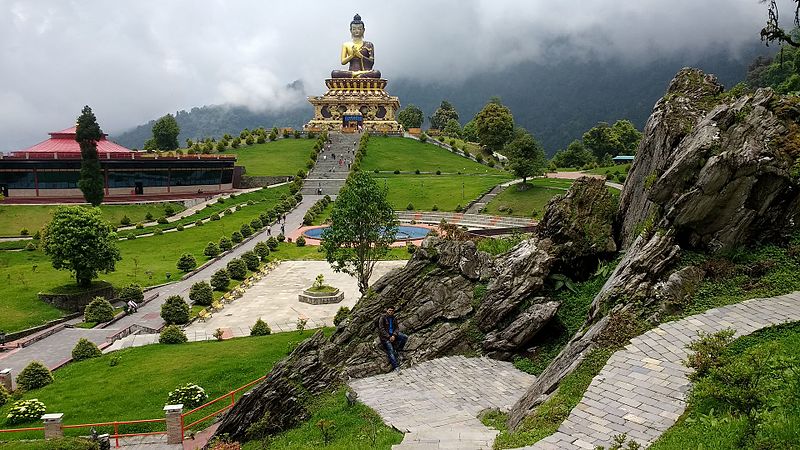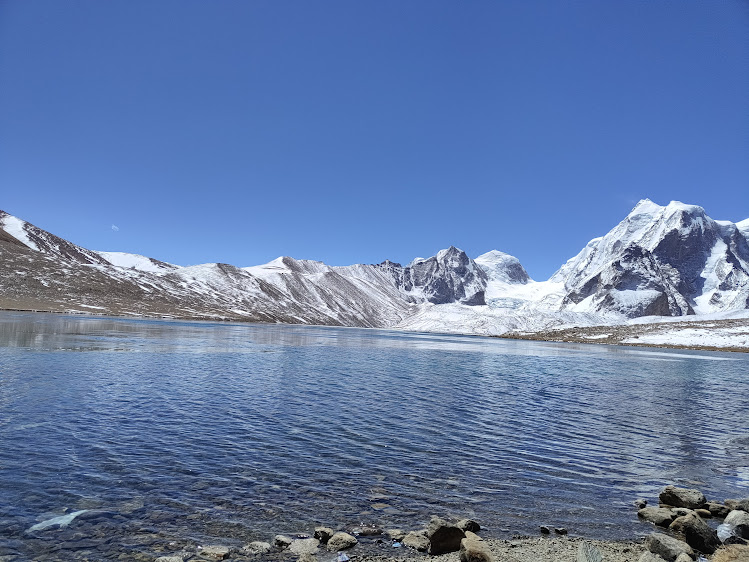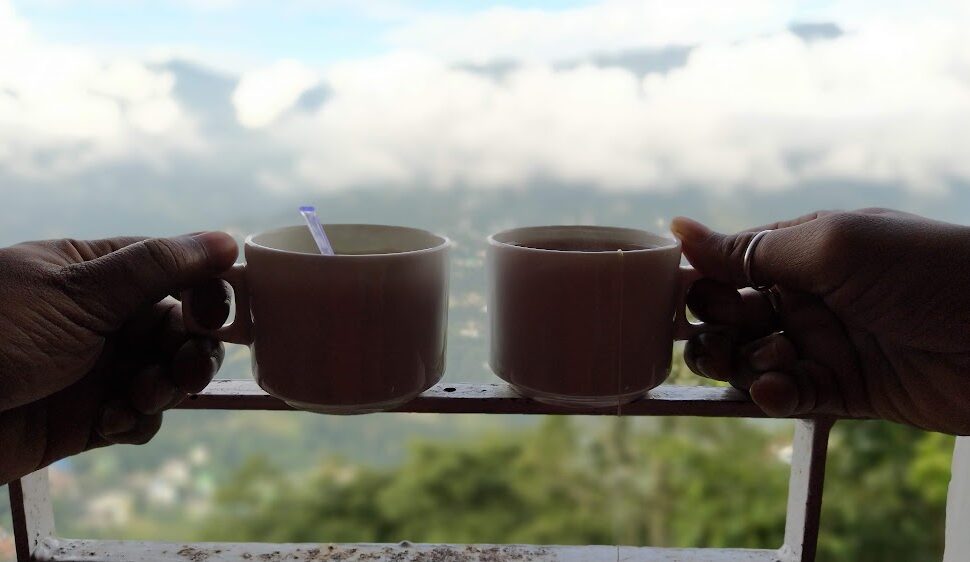Nestled in the pristine hills of Sikkim, Pelling is a charming destination that offers breathtaking views of the majestic Kanchenjunga peak. With its serene ambience, lush landscapes, and rich cultural heritage. Pelling is a year-round destination that caters to various preferences. In this comprehensive guide, we’ll delve into the best time to visit Pelling. Explore its neighboring attractions like Ravangla. And offer insights into planning your ideal trip.
It provides amazing views of the adjacent Himalayan mountains, notably the imposing Kanchenjunga, which stands at a height of roughly 2,150 meters (7,200 feet) and is the third-highest peak in the world.
This stunning ridge is remarkably decorated with breathtaking beauty and verdant trees all around. Everyone who visits the town of Pelling, from tourists to families, is struck by its breathtaking beauty.
The Ultimate Guide to the Best Time to Visit Pelling, Sikkim
Let’s see the best time to visit Pelling and what is so special in these different seasons with some of their famous sightseeing.
Pelling experiences a pleasant climate throughout the year, making it accessible to tourists at any time. However, the most favorable time to visit the Pelling are:
- Spring Season i.e. March to May
- Autumn Season i.e. September to November
During these months, the weather is neither too cold nor too humid, offering comfortable conditions for exploring the town and its surroundings.
Pelling in March to May – Best Time To Visit
Spring is a magical time to visit Pelling, as the snow from winter gradually melts. Revealing vibrant flora and blooming rhododendrons. The temperature ranges from 10°C to 20°C. Providing a pleasant atmosphere for outdoor activities and sightseeing. The clear skies also enhance the views of the Kanchenjunga range, creating a picturesque backdrop for your vacation.
Spring (March to May) -Places to Visit are:
March: As March unfolds, the snow starts to recede from the higher peaks, revealing the lush green landscapes beneath. The air is crisp and invigorating, making it the perfect time for outdoor explorations. Rhododendrons, the signature flowers of the region, begin to bloom in a riot of hues. Turning the hillsides into a breathtaking canvas of pinks, reds, and whites. Trekkers and nature enthusiasts throng to Pelling during this time to witness the natural spectacle.
April: April is the zenith of spring in Pelling, with temperatures rising slightly and nature being at its vibrant best. The Kanchenjunga Range, visible from various vantage points in Pelling. Stands magnificently against the azure sky, providing a backdrop of unparalleled beauty. The local markets start bustling with activity. As farmers bring their fresh produce to sell. This is an excellent opportunity to savor the flavors of the region. Through local dishes prepared from farm-fresh ingredients.
May: In May, as the mercury continues to rise, Pelling celebrates its spring in full glory. Festivals and cultural events dot the calendar. Offering visitors a chance to immerse themselves in the local way of life. The Sikkimese New Year, Losar, is often celebrated in March but its spirit continues well into April and May. Colorful processions, traditional dances, and elaborate feasts characterize these celebrations. Providing a glimpse into the rich heritage of the region.
Pelling in September to November
Autumn is another ideal period to explore Pelling. With clear skies, mild temperatures, and breathtaking mountain views. The temperature hovers around 12°C to 17°C. Making it comfortable for hiking, trekking, and enjoying nature walks. The post-monsoon landscape is rejuvenated, offering a stunning panorama of colorful landscapes against the backdrop of the snow-capped peaks.
Autumn (September to November)
September: As September arrives, a subtle shift in the air heralds the onset of autumn. The monsoon rains begin to recede, leaving behind refreshed foliage that glistens under the soft sunlight. The clear skies and moderate temperatures create an ideal setting for outdoor exploration and adventure. The iconic Kanchenjunga Range, often shrouded in mist during the monsoons. Now stands majestically in full view. Its snow-clad peaks captivate all who gaze upon them.
October: October marks the pinnacle of autumn’s beauty in Pelling. The hillsides are ablaze with a symphony of colors as the deciduous trees shed. Their leaves in shades of gold, amber, and crimson. The landscape resembles a painter’s palette. With each stroke of nature’s brush crafting a masterpiece. This period also coincides with the revered Hindu festival of Dashain or Durga Puja. When locals engage in vibrant celebrations, traditional rituals, and elaborate processions. The streets come alive with music, dance, and an atmosphere of joyous camaraderie.
November: As November unfolds, Pelling’s autumn charm continues to captivate visitors. The weather remains pleasantly cool, making it an excellent time for sightseeing and outdoor activities. The town’s tranquil ambiance provides an ideal backdrop for introspection and relaxation. Tourists can explore the iconic Pemayangtse Monastery. A revered Buddhist site that offers a glimpse into the spiritual heritage of the region. The Rabdentse Ruins, an ancient royal capital, also beckon history enthusiasts and trekkers alike.
Best Time to Visit Pelling Ravangla
While in Pelling, consider extending your trip to Ravangla. A picturesque town located just a few hours away. Ravangla boasts serene monasteries, tea gardens, and adventure activities. Making it a worthy addition to your itinerary. The best time to visit Pelling Ravangla aligns with Pelling’s ideal seasons. Ensuring you get the most out of your Sikkim experience.
Duration of Your Visit:
Many people wonder how many Days require to visit the Pelling. Here is the answer.
The ideal duration for your Pelling and Ravangla exploration ranges from 3 to 5 days. This allows you to thoroughly explore both towns, engage in various activities. And soak in the beauty of the landscape without feeling rushed. Your itinerary can be tailored to your interests, whether you’re an adventure enthusiast, a cultural explorer, or simply seeking relaxation in nature’s embrace.
Best Time to See Kanchenjunga from Pelling
Pelling offers a unique opportunity to witness the majestic Kanchenjunga peak, the third-highest mountain in the world. To catch the best views, wake up early and head to popular vantage points like Pelling Helipad and Sangachoeling Monastery.
The golden hues of sunrise cast a mesmerizing glow on the snow-capped mountains, creating a surreal experience that will remain etched in your memory.
Best time to see kanchenjunga from pelling is early morning, during summer season. To enjoy a clear view of Mount Kanchenjunga.
Don’t miss the chance to explore neighboring Ravangla. And allocate a few days to immerse yourself in the enchanting allure of this Himalayan haiven. Plan your trip wisely, and you’ll be rewarded with memories that last a lifetime.
Conclusion – Best Time to Visit Pelling Sikkim
In conclusion, Pelling is a destination that captivates visitors year-round with its stunning landscapes, vibrant culture, and proximity to the awe-inspiring Kanchenjunga range. Whether you choose to visit during the spring or autumn, Pelling promises an unforgettable experience that showcases Sikkim’s natural beauty at its best.
The best time to visit Pelling is spring and autumn. Spring unveils vibrant flora and blooming rhododendrons. While autumn offers clear skies and stunning mountain vistas. A three to five day visit allows immersive exploration of Pelling.
Image source: 1
Image Disclaimer: We believe that images are personal property of uploader and we have tried to give the credit to actual image uploader above. In case we miss to give the credit or if you want us to remove any of the images from our website. Please email us on triaayatravels@gmail.com and we will act asap.



Polish Newssays:
There’s a quiet wisdom in every sentence, as though each word is carefully selected to provide just the right amount of insight.